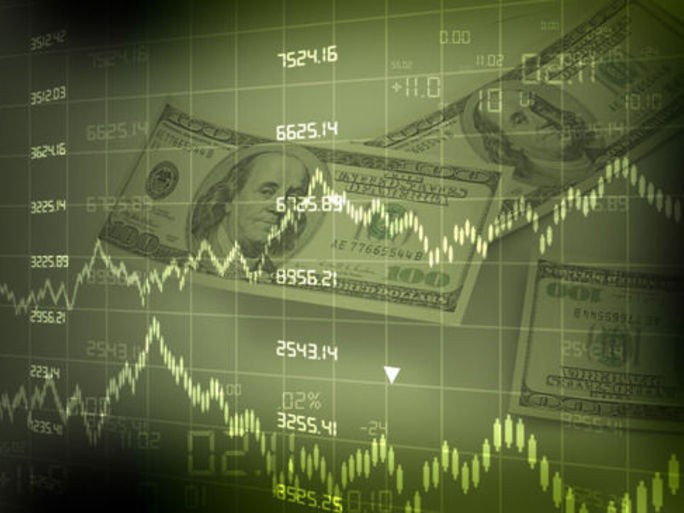5 Myths About Investing In Foreign Stock Market ETFs
Post on: 31 Март, 2015 No Comment

Don’t fight the Fed and the trend is your friend are useless stock market adages unless they’re combined with broader wisdom. The same is true for many assumptions about investing abroad using ETFs .
Successful investors learn not to take the old stock market saws at face value.
Here we dispel five common myths about foreign investing and exchange traded funds:
Myth No. 1: ETFs of countries with superior gross domestic product or GDP growth are always going to outperform.
When asked his outlook on the global markets for 2013 and where he’s most heavily invested, Christopher Brown, chief investment officer at Pax World and portfolio manager of the Pax World Balanced responded: IMF (The International Monetary Fund) forecasts real GDP growth for the U.S. at 2.1%; Europe 0.5%; Japan 1.2%; emerging markets 5.6%. We mainly favor U.S. equities and some exposure to emerging markets.
You’ll see Brown and other asset managers quoted saying they favor emerging markets for their superior economic growth, an expanding middle class and improving living standards that call for better meat and consumer electronics.
The logic is that faster economic growth leads to stronger earnings growth and therefore higher stock market gains. But Brown and others who’ve been in the investment trenches will tell you it’s not that simple. A study conducted by Vanguard released in 2010 found the correlation between GDP growth and stock market performing has been effectively zero.
This counterintuitive result holds across the major equity markets over the past 100 years, as well as across emerging and developed markets over the past several decades, the report said.
The report’s authors concluded emerging markets outpaced developed markets the past 10 years because of their comparatively low equity valuations in the early 2000s coupled with consistently higher-than-expected economic growth throughout the period.
For example, China’s annual GDP growth — the world’s fastest — ranged from 7% to 14% the past 12 years. But the MSCI China index plunged more than 50% in 2008, when GDP grew north of 9%.
China barely outpaced the average emerging market loss of 54%. In 2010, when GDP grew 10%, the MSCI China index returned only 2.3%, lagging emerging markets by 14 percentage points.
Myth No. 2: The corollary to Myth No. 1 is that countries in recession will underperform.
Every emerging market plummeted in 2008, even though none of them fell into recession. They all rebounded strongly the following year, even though many of them fell into a recession. The MSCI Mexico index rallied 53% in 2009 vs. 74% for emerging markets. Its economy shrank nearly 6% that year. Mexico’s stock market lost 13% in 2011, while its economy expanded nearly 4%.
The same inconsistencies can be found in developed markets. Italy’s economy shrank more than 2% in 2012, while the MSCI Italy Index returned almost 9%.
Countries with the slowest GDP growth were never the biggest stock market losers. And stocks of countries with the greatest GDP growth never trumped their peers.
This is because the stock market marches ahead of the economy and anticipates economic turnarounds long before they take hold.
Myth No. 3: All country ETFs are the same.
Second only to the U.S. China has more ETFs slicing and dicing its market than any other. The underlying indexes differ greatly.IShares FTSE China Large-Cap ETF ( FXI ) holds only 25 blue chip companies, most of which are financials. That sector accounts for nearly 60% of assets in the ETF followed by telecom at 17%, energy at 14%, and none in technology.
FXI returned 9.5% the past year, an average of 4% the past three years and -1.8% over five years.
By contrast,SPDR S&P China ETF ( GXC ), with 220 stocks, has a 35% allocation to financials, 15% in energy and 11% in technology. It’s returned 13% the past year, an average of 6% the past three years and 1.7% over five years.

Myth No. 4: All country ETFs are broadly diversified. One would assume that investors get equal exposure to all sectors of a country’s economy. But in fact, some country ETFs are closet sector plays, says Todd Rosenbluth, ETF analyst at S&P Capital IQ.
IShares MSCI Hong Kong ETF ( EWH ), with 62% of assets invested in financials, is practically a financial ETF. It has scant exposure to technology and none to health care, energy or consumer staples.
Market Vectors Russia ( RSX ) is predominantly an energy play with 43% of assets in that sector, which is highly dependent on foreign demand. With less than 1% of assets in health care and consumer discretionary, it has very little exposure to internal growth.
Myth No. 5: Emerging market ETFs entail higher risks and volatility because they’re more speculative than developed countries. They’re just as risky (or not) as other countries.
A comparison of the beta ratios shows that stock markets of the world’s most notoriously violent regions have very low volatility and some very politically stable countries had the most volatility.
Beta measures the volatility of a stock or portfolio against a benchmark index. A beta of 1 means the stock moves up and down as much as the benchmark. A beta of less than 1 means it’s less volatile, and higher than 1 signals more volatile.
Thinly tradedMarket Vectors Gulf States ( MES ) sports a beta of only 0.33 andWisdomTree Middle East Dividend’s (GULF) beta is 0.44.
Nearly twice that volatility is found in iSharesMSCI Spain Index (EWP) with 1.8 and iShares MSCI Italy with 1.9.
For investors looking for a subdued path to emerging markets, Rosenbluth recommendsPowerShares S&P Emerging Markets Low Volatility (EELV).
Follow Trang Ho on Twitter @TrangHoETFs














